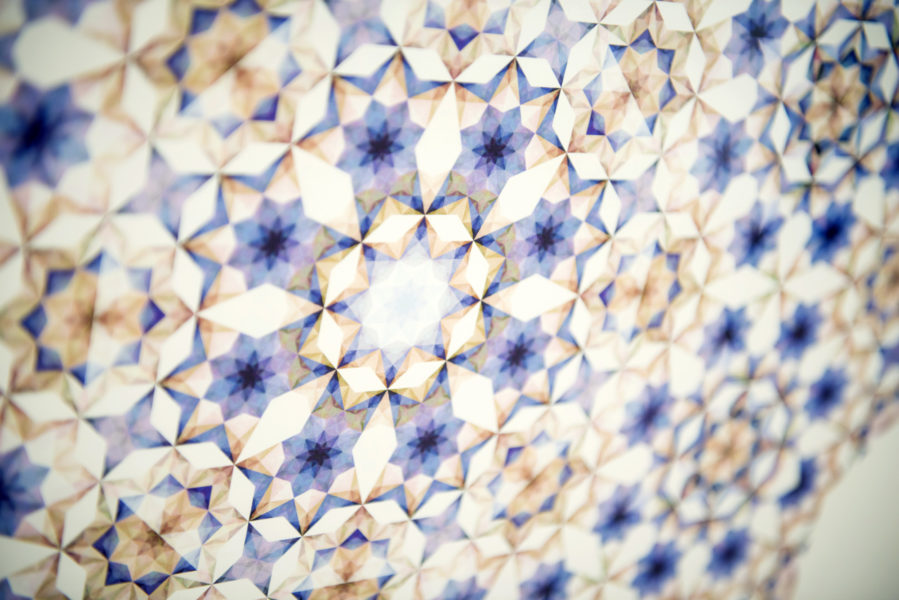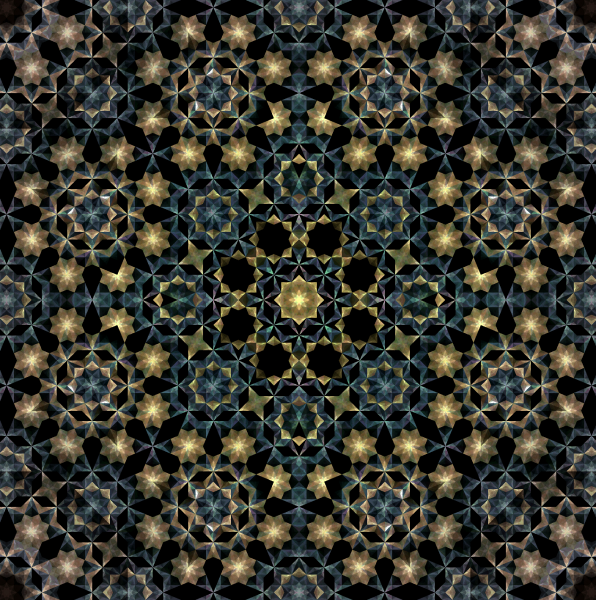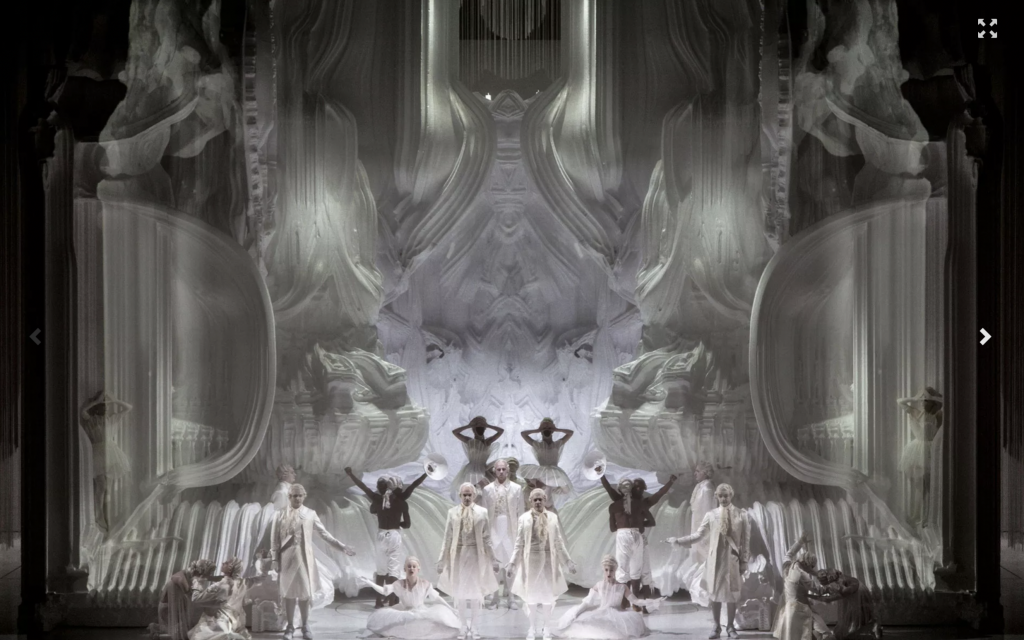As a Muslim American I’ve had the privilege of coming from an artistic heritage of geometric graphic art. From the Alhambra to the niche at the CFA, Muslim geometric art is one of the most amazingly simple yet dazzlingly complicated art forms I’ve ever studied. (historical studies, of course. I’m not good enough at drawing it yet!) So naturally I went looking for some Muslim generative geometric art, and I found this amazing project called A Hidden Order, a cross disciplinary collaboration between traditional Muslim-British geometer Sama Mara, and English musician Lee Westwood.
By combining sound and geometry they have created a generative art process where the music and sound informs the composition of the piece. First, Lee Westwood (and co) play a pre-composed piece. This is then run through algorithms and code to generate a colorful geometric image which assembles itself over the course of the piece. Some of them could then be photographed and turned into prints like these:


I’m not sure how exactly they might have even approached the algorithms to this. Just the concept boggles my mind. To see them actually performing and having the piece assemble as they play is even more astounding. This was what was said of the project by the author of the Islamic Digital Arts blog: “Each key or note was interpreted by a program that would then convert the sound to form part of a colour and shape system.” And yes, while some might think it looks like a kaleidoscope, it isn’t so simple. These forms are not just refractions of glass but are a part of a sacred geometry which has influenced the architecture and art of large parts of the world for over a millennia. If these were ceramic tiles, I could see them decorating the walls of grand mosques from Morocco to Indonesia. Were they carved stone, I could imagine them as the dazzling domes of the mosques in Isfahan. Not only is there a mathematical and artistic significance here, but a cultural one as well.
At the end of the day, I’m not so concerned with the algorithm as with the intersections and overlap of Western, Islamic, musical and visual arts and math. It’s really a gorgeous representation of how so many seemingly different things can come together to create beautiful art!
![[OLD SEMESTER] 15-104 • Introduction to Computing for Creative Practice](../../../../wp-content/uploads/2023/09/stop-banner.png)


